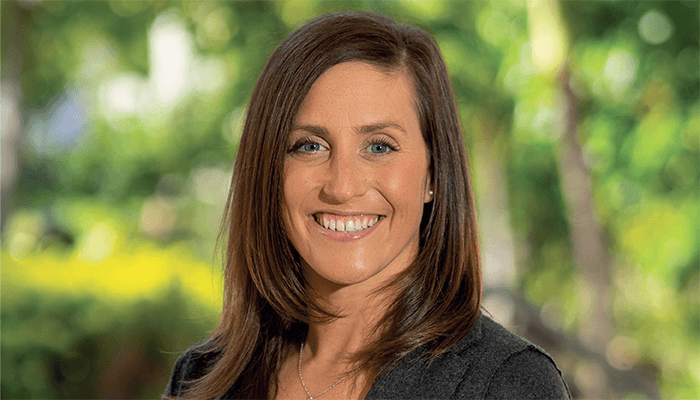The Analytical Scientist, in collaboration with LECO Corporation, Restek, Axel Semrau and GL Sciences, invited those working in the GC-MS space to submit their most impressive application notes for the chance to win some exciting prizes – all expenses paid facility or conference trips, consumables worth $3,000, and instrument discounts, to name but a few.
Our expert panel of judges – including Robert K. Nelson, James Harynuk, Susan Richardson, Hans-Gerd Janssen, Giorgia Purcaro, Erich Leitner, Jaap de Zeeuw, and Robert Trengove – have considered the entries and the results are in! Our winners across the following categories are:
- Dmitry Koluntaev for Best Novel Application
- Anika Lokker for Excellence in Chromatography
- Flavio A. Franchina for Creative Use of Application Workflows, Sample Prep & Automation
- Katelynn Perrault – Special Recognition
Here, we catch up with Special Recognition winner Katelynn Perrault.
Sandalwood in the Second Dimension
Special Recognition: “Comprehensive two-dimensional gas chromatography analysis of commercial essential oils from different sandalwood species”
With Katelynn A. Perrault, Associate Professor of Forensic Sciences and Chemistry and joined Chaminade University of Honolulu, USA
Please introduce yourself…
Our research involves the non-targeted profiling of complex samples by comprehensive two-dimensional gas chromatography (GC×GC). Specifically, we focus on volatile matrices that comprise complex odors related to forensic science, biomedical, and natural product applications.
What was your main inspiration?
Recently, we worked on several complex samples of Pacific Island origin due to our location in the Pacific and our interest in complex plant products in Hawaii. These included samples of kava (a beverage made from Piper methysticum) and poi (food product from Colocasia esculenta).
Many personal care and aromatherapy products in Hawaii contain Royal Hawaiian Sandalwood within them, and we were curious to see if our non-targeted methods could differentiate the entirety of the volatile profile of other sandalwood species from other regions in the world. This was particularly interesting because some ISO methods are developed to look at quality indicators within sandalwood essential oils, but they are based on targeted analysis of only a few compounds.
Our non-targeted GC×GC method allows us to see a wealth of information within these complex plant products. With this knowledge, we were interested to see if the method would provide further value in differentiating the oils.
Any challenges?
We had to optimize our method to improve our separation because the samples were quite different from other samples we analyze. The samples were injected using our one-dimensional GC instrument to see what the samples contained. I tasked my Instrumental Analysis class (in groups) to come up with different ways of improving the 1D GC separation by playing with parameters, such as oven ramp, split flow, and carrier gas flow rate.
Taking the optimized 1D GC method, we translated it to our GC×GC system for further analysis. The students had a lot of fun learning about the GC technique using this “optimization challenge” and it brought up some great points of discussion of chromatographic theory in class after the results were obtained.
What were your main findings?
GC×GC was a powerful tool to elucidate subtle but important changes in the complex chemical sandalwood essential oil profiles. Non-targeted analysis was used to investigate compounds that are quality indicators – according to standard methods – simultaneously with other product components that could be relevant to monitoring these products. Monitoring additional compounds within the profile may assist in understanding their different therapeutic benefits by tracking a component to its known pharmacology.
Any lessons learned?
During the study, we were contacted by representatives of an essential oil company who asked how GC×GC might help them with product monitoring. Having data to share with them and explain the benefits of GC×GC was incredibly valuable.
Do you have any tips for scientists hoping to bring a touch of creative flair to their application workflows or method development?
Crowdsourcing ideas for method development can be valuable. For our study, a group of undergraduate students came up with ideas for optimizing our first dimension separation – a fun exercise to tackle together. I could also see this group approach being a valuable tool in R&D laboratories when meeting challenges in method development.
What’s on the application horizon?
There is always a long wishlist of new applications that we want to tackle; you will have to wait and see what we do next!
You can download the application note here.





